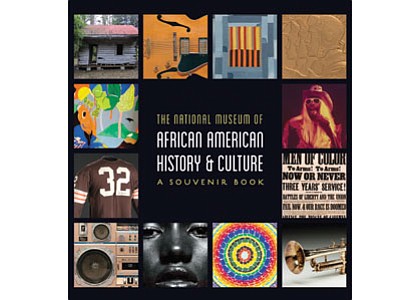Just steps away from the Martin Luther King Jr. Memorial on the National Mall another dream has been realized. The doors to a museum devoted exclusively to the preservation and commemoration of African American life, history and culture will finally open.
After 13 years of research and curation, on September 24, the Smithsonian’s National Museum of African American History and Culture will unveil an expansive, awe-inspiring, gut-wrenching, hope-filling, tear-jerking and breathtakingly beautiful account of the African-American experience in this country.
“There’s so much to take in and so many emotions to sift through at one time,” said Janell Martinez, editor-at-large of AintILatina.com, who previewed the museum with the media last week for her Afro-Latina audience. “I was a bit overwhelmed in the beginning. At first I was a bit upset and then as I moved upward throughout the museum, I began feeling at peace and filled with hope.”
It seems that’s the effect museum curators were going for when laying out the exhibitions for display. The story of slavery and freedom begins on the museum’s bottom floor— underground— where the telling of the story of the development of transatlantic slave trade unfolds in a display of original artifacts, media presentations and personal stories of slaves and slave-owners that chronicle how the slave trade began through to the Civil War.
“It’s not a sad story, it’s an empowering story,” Mary Elliott, co-curator of the “From Slavery to Freedom” exhibition, told the Baltimore Times. “And it’s not about shameful finger-pointing, like ‘hey, look what they did.’ It’ more about, ‘hey let’s talk about this.’ There’s a lot of ground to cover here.”
Throughout the entire museum are juxtapositions of profit and power against the human cost. People will witness how slavery was first commercialized and then racialized in order to continue to profit without being haunted by the cruelty of slavery.
“We wanted to emphasize the human experience and the humanity of people who lived through enslavement,” Dr. Nancy Burcaw, Elliott’s co-curator of the exhibition said. “Being in this space underground, in terms of this history having been hidden in the past, it is completely foundational and, just the radicalism of it. There’s so much black radicalism in this exhibition alone. We wanted people to feel as well as learn in their heads.”
Among the many priceless pieces from the “Slavery and Freedom” history gallery is the display of the Bible belonging to Nat Turner, leader of the bloodiest slave revolt in American history. The Bible was donated to the museum by the Person family, descendents of a Virginia family killed during the rebellion. According to Elliott, when they found out about the museum’s collection efforts, they felt it was the best place for the public to consider the history it represents, according to Elliott.
“That’s very powerful because that family is white and their ancestors were actually killed during that rebellion. But for someone to say it is important for us to bring to [the Bible] to public to wrestle with this history and to help us move forward is very powerful in and of itself,” said Elliott.
From there, the only way is up. A journey upward, two concourses reveal a slow but steady progression toward relief for African Americans. First is “Defending Freedom, Defining Freedom: Era of Segregation 1876-1968.” This exhibition takes visitors from the end of Reconstruction through the Civil Rights Movement of the 1960s. It is rich with history and artifacts that capture the major aspects of the ongoing struggle by the nation in general and African-Americans in particular to define and make real the meaning of freedom. The last history gallery, “A Changing America: 1968 and Beyond” illustrates the social, economic, political, and cultural impact of African-Americans on life in the United States. Subjects include the Black Arts Movement, hip-hop, the Black Panthers, the rise of the black middle class and, more recently, the #BlackLivesMatter movement.
The Reverend Jesse Jackson was among the few invited to preview the museum. The Baltimore Times caught up with him canvassing the “Making A Way Out Of No Way” gallery that conveys the ways in which African-Americans created possibilities in a world that denied them opportunities.
“In a period of real reactionary backlash, progress was made,” said Jackson of his reaction to the exhibitions. “But the irony is that the beneficiaries of that progress are fierce in their resistance to it. We have made great progress and yet there’s such fear around it. Some people make a living out of selling fear. The bottom line is that we were formed by hope.”
According to Jackson, the opening of this museum’s doors will challenge the work and thought of American history scholars.
“American history scholars must come back here to get their degree recertified,” he said. “Any American history Ph.D. that did not have this [information] in their history book did not have an authentic Ph.D. in American history. This is America’s history.”
